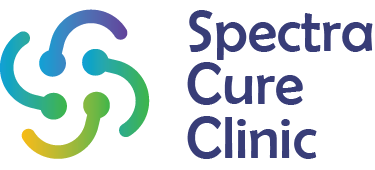
Autism, ADHD, and the Brain: The Promise of Photobiomodulation Therapy
The OFC is an important part of the cerebral cortex with attributes ranging from
decision-making to modulation of emotional and social behavior. Dysfunctional activity
within this region has been highly implicated in ASD, characterized by impairments in
social interaction, restricted and repetitive patterns of behavior, and deficits in emotional
processing. Researchers are looking into a new, noninvasive treatment called
photobiomodulation-or PBM-that uses near-infrared light to possibly improve OFC
functioning, reduce neuroinflammation, and hopefully improve behavioral symptoms
among individuals with ASD.
As known in our culture and community that Autism Spectrum Disorder (ASD) is a
neurodevelopmental condition marked by challenges in social communication, restricted
and repetitive behaviors, and heightened sensory sensitivities. Its etiology is complex,
influenced by a mix of genetic predispositions and environmental factors.
Despite extensive research, the causes of ASD remain complex, involving both
genetic and environmental factors. However, advances in neuroimaging studies
have consistently shown that individuals with autism often have structural and
functional differences in the brain, particularly in the prefrontal cortex—the
region responsible for decision-making, emotional regulation, and social
behavior.
One area of focus is the orbitofrontal cortex (OFC), a key part of the prefrontal
cortex that helps regulate reward processing, emotions, and flexible thinking.
Neuroimaging studies show that people with ASD often have structural and
functional abnormalities in the OFC, such as reduced gray matter volume and
atypical brain activity during social interactions. These changes affect how they
process emotions, adapt to new situations, and understand social norms, contributing
to core symptoms of autism (Wang et al., 2015; Liu et al., 2020).
By studying how the brain processes information differently in individuals with ASD,
researchers aim to develop more effective interventions that can support cognitive
and emotional development. One promising area of exploration is
photobiomodulation (PBM), a non-invasive therapy that could potentially enhance
brain function and improve symptoms related to OFC dysfunction.
Photobiomodulation (PBM) is a therapy that uses special wavelengths of near-infrared
(NIR) light to stimulate brain cells. This light helps boost mitochondrial function (which is
like the powerhouse of the cell, providing energy), improves blood flow to the brain, and
supports brain plasticity (the brain’s ability to adapt and form new connections).
Scientists are studying how problems in the orbitofrontal cortex (OFC) affect autism and
whether PBM can help improve brain function. Early research suggests that PBM may help with
brain activity and reduce inflammation, making it a potential new therapy for children with Autism Spectrum Disorder (ASD).
Research suggests that PBM can help individuals with
Autism Spectrum Disorder (ASD) by boosting
mitochondrial activity, increasing ATP production,
and improving neuronal metabolism. This process may
reduce oxidative stress and neuroinflammation,
both of which are linked to ASD. Additionally, PBM
enhances cerebral blood flow in key brain areas like
the orbitofrontal cortex (OFC), which could lead to
improvements in cognitive flexibility and social
behavior (Pallanti et al., 2022).
The
rough mechanisms such as mitochondrial activation
and anti-inflammatory effects, PBM helps stabilize
brain function, making it a promising approach for
ASD treatment. As research advances, PBM could become a valuable tool in improving social
interaction and cognitive abilities in individuals with autism.
The Treatment is Available at Our Clinic
At Spectra Clinic, we offer photobiomodulation therapy, an innovative and
non-invasive treatment designed to support children with Autism Spectrum
Disorder, ADHD, and other neurodevelopmental challenges. This therapy helps
stimulate brain function, enhance social interaction, and improve cognitive
abilities in a safe and effective way.
Post Views: 767

